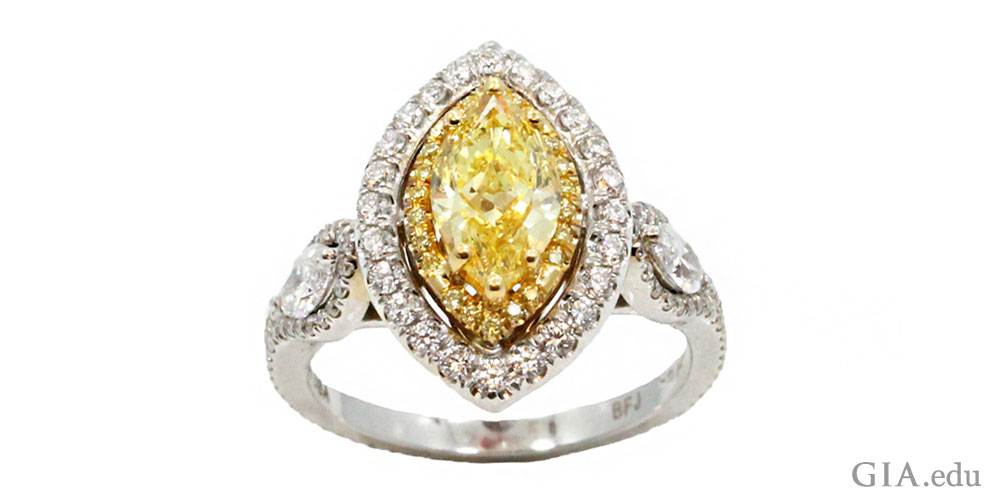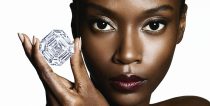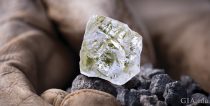There’s no shortage of engagement ring myths. Here are some of the more common ones: Bigger diamonds always look better than smaller ones. Round brilliants are the best. Diamonds are unbreakable. True? False? We investigate these myths and deliver the facts.
In this blog, we examine the following engagement ring myths:
A Bigger Diamond Is Always Better
Any Diamond Will Sparkle
I Need to Buy a Round Brilliant
Diamonds Can’t Break
Inclusions Will Cause a Diamond to Break
I Can Get a Better Deal on a Diamond by Not Buying Retail
Diamond Fluorescence Is Bad
A Diamond Engagement Ring Should Cost Three Months’ Salary
Myth #1: A Bigger Diamond Is Always Better
A common myth about engagement rings is that a bigger diamond has a better face-up appearance than a smaller one. But just because a diamond is big doesn’t mean it will have more brightness, fire and scintillation. A small diamond can have mesmerizing sparkle, while a large diamond can look dull. How a diamond performs under light is a function of its cut, not its carat weight. So, debunking one of the biggest myths about engagement rings, a bigger diamond is not necessarily a better one.
Myth #2: Any Diamond Will Sparkle
A common misconception about diamond engagement rings is that every diamond sparkles. A diamond’s cut – how its facets interact with light – creates its sparkle. Precise artistry and workmanship are required to fashion a stone so its proportions, symmetry and polish deliver the magnificent return of light. A diamond with a poor cut will have little to no sparkle.

A diamond’s cut greatly affects its appearance, as these three round brilliants illustrate. From left to right, they received cut grades of: Poor, Good and Excellent. Photo: Kevin Schumacher/GIA
You can turn to a GIA Diamond Grading Report, a GIA Diamond Origin Report or GIA Diamond Dossier for an objective evaluation of the cut of a round brilliant diamond. A GIA cut grade of Good or better will deliver the sparkle you’re expecting.
It’s worth mentioning that dirt is the enemy of sparkle. Just as a dirty mirror will reflect poorly, so will diamond facets that have skin oils, lotion and other substances on them. Keeping your diamond clean is key to keeping it sparkling.
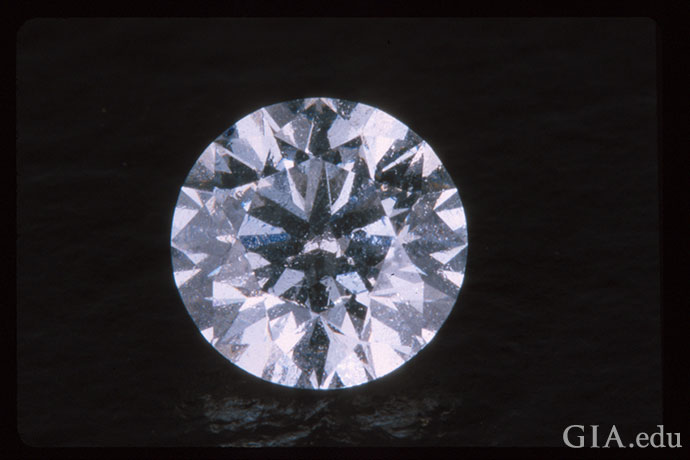
The sparkle of this E color 0.61 ct round brilliant is dulled by oil and dirt. Photo: Maha Tannous/GIA

What a difference a cleaning makes. Oils have been removed from the same diamond, and it now has a scintillating sparkle. Photo: Maha Tannous/GIA
The takeaway from all of this: If you want a diamond that sparkles, make sure it is cut well; if it is a round brilliant, look for one with a cut grade of Good or better on its GIA Diamond Grading Report. Once it is yours, keep it clean. This way, the engagement ring will be noticed and admired.
Myth #3: I Need to Buy a Round Brilliant
A round brilliant diamond is the most popular shape and cut for engagement rings. About half of all brides wear one. And for good reason: It’s beautiful, appealing and can have spectacular brightness, fire and scintillation.

Simply enchanting and enchantingly simple, this six-prong ring with a 1.37 ct H color diamond is sure to win the heart of a bride to be.
But do you need to buy a round brilliant? Consider that about half of all brides wear engagement rings set with diamond shapes other than round brilliants. These fancy shapes can be just as beautiful and deserve your consideration. And some might even cost less per carat than a round brilliant. Some of the more popular fancy shape diamonds include: the princess cut, marquise, cushion cut and emerald cut. Ovals are currently popular and can have bewitching sparkle. So, the myth that only a round brilliant diamond makes for a beautiful engagement ring is untrue! Other diamond shapes are just as popular, and just as beautiful.
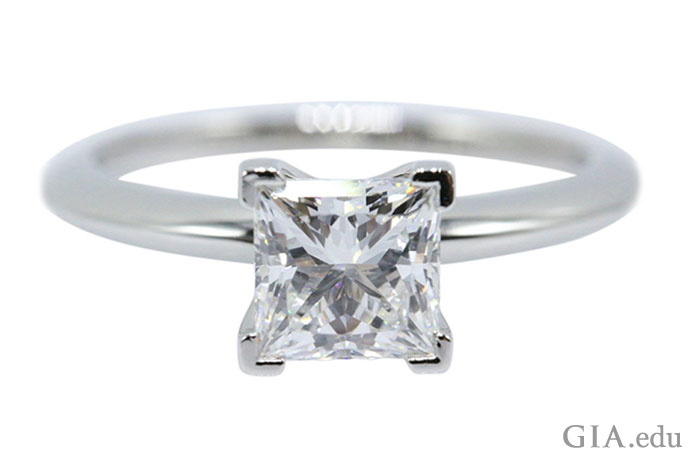
A princess cut diamond can rival the brightness of a round brilliant. Square or rectangular in shape, the princess cut also looks a bit different, like this 1.03 ct beauty in a four-prong setting. Courtesy: TrueFacet.com

Supposedly named after the Marquise de Pompadour because its outline resembled the shape of her mouth, the marquise diamond is rich in beauty and lore. This sunny stunner of an engagement ring boasts a 1.10 ct marquise yellow diamond and two white marquise diamonds in the shank, with a halo of melee diamonds surrounding the center stone. Courtesy: TrueFacet.com

The cushion cut diamond traces its roots to the 1700s, and the passage of time hasn’t dimmed its beauty. Its appeal is easy to see in this engagement ring, which features a 7.82 ct cushion cut center stone. Courtesy: 1stdibs.com
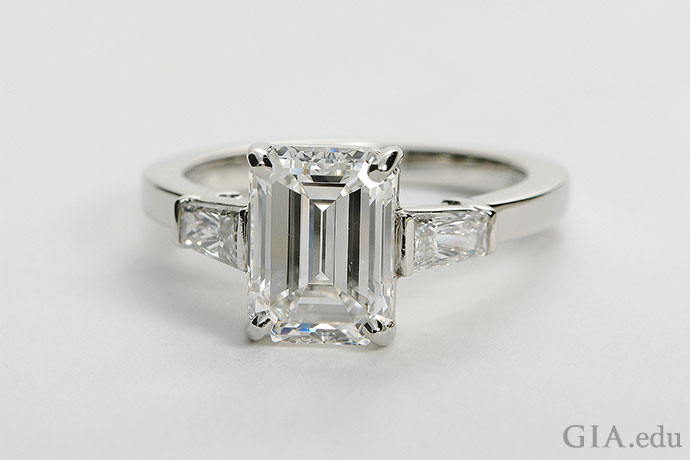
This 2.71 ct diamond showcases the stately beauty of an emerald cut, The center diamond is accentuated by two tapered baguettes. Courtesy: Blue Nile
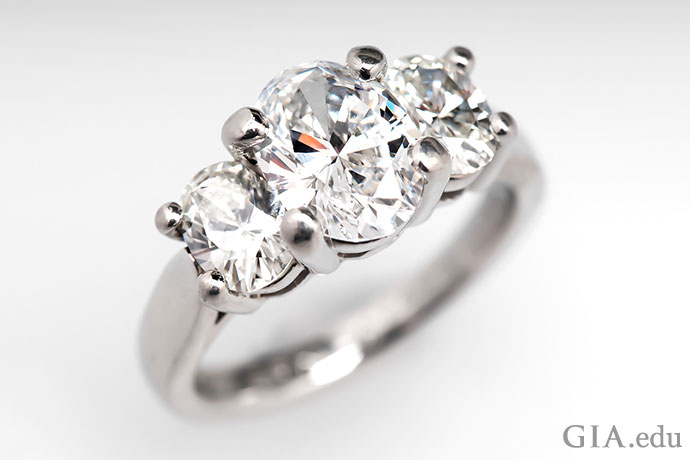
Romance and sparkle abound in this three stone platinum engagement ring featuring a 1.57 ct oval diamond center stone. Photo: GIA
Myth #4: Diamonds Can’t Break
Diamond is the hardest gem material on earth and is impervious to virtually all acids. It can also withstand higher temperatures than most gemstones. But if a diamond cutter can purposely cleave (split) a diamond by giving it a sharp blow in the right direction, you can achieve the same result if you accidentally hit it hard enough in the right place.
Cleavage planes in diamond occur because carbon atoms parallel to these planes are more tightly bonded (that is, tougher) than the atoms between the planes. A cleavage plane is the weakest direction in the molecular arrangement of a diamond crystal, and it always parallels one of the crystal’s triangular faces. If a diamond is hit hard along one of these planes, it can chip or fracture.
Chips typically occur when the girdle edge or an exposed point, like the tip of a pear shape or marquise, strikes something hard. Diamonds being unbreakable is simply a myth. Storing or wearing diamond-set jewelry items next to each other can also cause chips, scratches or other damage. Certain diamond cuts with pointed corners, like the princess cut, are particularly vulnerable and are often set with V-shaped prongs positioned over the corners to protect them from chipping.
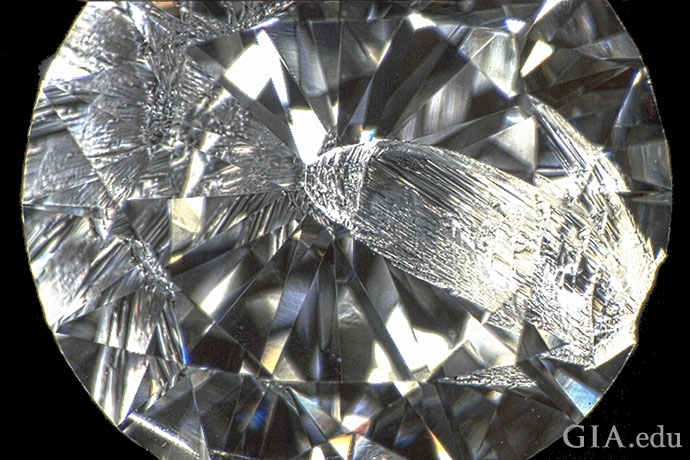
Diamonds are known for their hardness – their ability to resist scratches and abrasions. But contrary to some diamond engagement ring myths, diamonds are not impervious to damage, since their hardness varies depending on the crystal direction. This 1.05 ct diamond has a chip starting at its girdle that extends to the culet. Photo: GIA
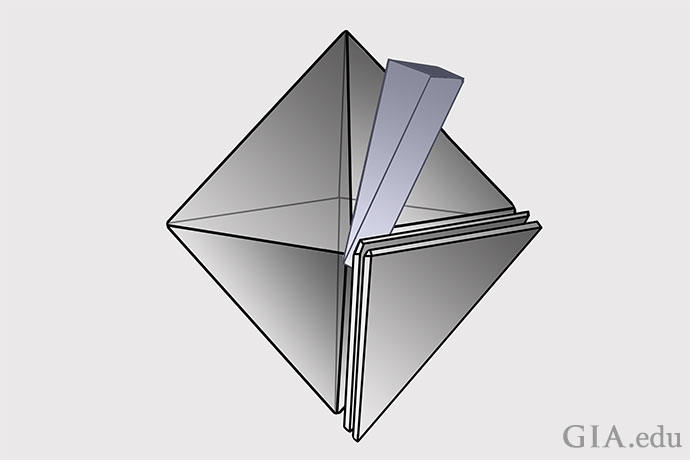
This illustration shows examples of cleavage planes parallel to the triangular octahedral face of a diamond. Illustration modified from V. C. Venkatesh and S. Izman, Precision Engineering, 2007, p. 54.
Myth #5: Inclusions Will Cause a Diamond to Break
Of all the diamond engagement ring myths covered here, there is some truth to this one. Inclusions are clarity characteristics that lie within a diamond. Inclusions in themselves won’t necessarily cause a diamond to break. But if they’re located on or near a cleavage plane or another vulnerable area like a girdle or culet, they could make the diamond more prone to chipping.

This diamond is marred by a chip, which may have been caused by an inclusion located on or near a cleavage plane or the girdle. Photo: GIA
Myth #6: I Can Get a Better Deal on a Diamond by Not Buying Retail
This is one of those engagement ring myths that really demands your due diligence and some research. It’s tempting to think that you’ll get a better price buying a diamond from “a friend of a friend,” through an online auction, or directly from a wholesaler or dealer. After all, you think, these sellers have lower overhead, so they should also have a lower markup — with these savings passed along to you. You may be right. However, it pays to comparison shop, taking into account all the costs associated with purchasing an engagement ring.
Whether you decide to buy your diamond from a traditional brick and mortar retailer or through another channel, be sure to look for some basic consumer protections: a minimum 30-day period for refunds or exchanges, quality guarantees, and diamonds accompanied by grading reports from a reputable lab. Any seller failing to provide these basic services may be offering a deal that’s too good to be true.
Buying from a traditional retailer may offer some additional advantages. A jeweler’s expertise is invaluable in helping you select both the diamond and the right setting for it. And many retailers offer discounted diamond-and-ring packages. Many also offer cleaning, repair and maintenance as long as you own the ring, as well as insurance and even trade-in programs should you want to up-grade your diamond in the future. In the end, you may find that the savings offered by other types of sellers are negated by the package discount and additional services offered by a retailer.
All this is to say that you have more options than ever when it comes to buying a diamond. Just be careful and smart, as you would with any important purchase.
Myth #7: Diamond Fluorescence Is Bad
This is one of the more common engagement ring myths – here are the facts: Diamond fluorescence is neither good nor bad. It is a naturally occurring characteristic that a diamond may possess. Some people like the blue (or rarely another color) glow that some diamonds emit when exposed to long-way ultraviolet (UV) light such as that from the sun and fluorescent lamps. Whether you choose a diamond with fluorescence is a matter of personal preference.
Fluorescence is common: Between 25% and 35% of the diamonds on the market exhibit some degree of fluorescence, which GIA grading reports describe as None, Faint, Medium, Strong or Very Strong. It’s worth noting that fluorescence is not considered a quality factor like the 4Cs (color, clarity, cut and carat weight). The extent of a diamond’s fluorescence is included in a grading report as additional information to help in identifying that particular diamond.

Blue is by far the most common fluorescence color in diamonds when they are exposed to long-wave UV rays. Half the necklace and one earring in this composite photo are shown under normal lighting conditions (left), and the other half of the necklace and the same earring are shown as they appear under a long-wave ultraviolet lamp (right). Copyright: GIA and Harold & Erica Van Pelt. Courtesy: Harry Winston, Inc., New York
You may have heard the myth about engagement rings that the fluorescence affects a diamond’s color grade. Not true. GIA color grades diamonds under tightly controlled lighting conditions designed to eliminate any effect from fluorescence. So it has no impact on the color grade assigned. However, the strength of a diamond’s fluorescence can influence your perception of the diamond’s color when viewed with certain types of lighting. For example, in bright sunshine some diamonds with a Medium to Strong blue fluorescence may appear more colorless. In rare cases, diamonds with Very Strong fluorescence may have a hazy or oily appearance; less than 0.2% of fluorescent diamonds exhibit this effect.
GIA’s research discovered that for the average observer, meant to represent the jewelry buying public, blue fluorescence had no systematic effect on a diamond’s face-up appearance. Even experienced observers did not consistently agree on the effects of fluorescence from one stone to the next.
Myth #8: A Diamond Engagement Ring Should Cost Three Months’ Salary
One of the older engagement ring myths, this one dates back to the 1950s. It’s been debunked before, but it’s worth negating again. The fact is, there is no hard and fast rule on how much you should spend on a diamond engagement ring. You need to determine what you can afford, set a budget and stick to it. By learning a little bit about diamonds, including the 4Cs of diamond quality and doing some comparison shopping, you’ll be able to choose a diamond of the best quality for your budget. Remember, at the end of the day the ultimate value of a diamond isn’t what it costs, but the love that goes into giving it.

